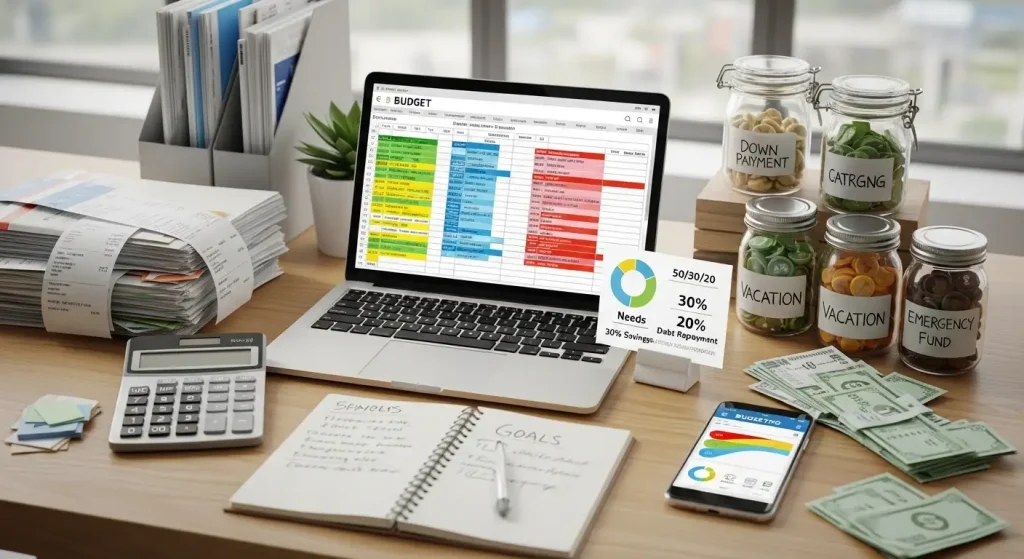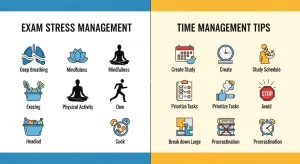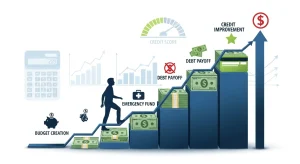Learning how to create a personal budget is one of the most powerful financial skills you can develop. With rising costs of living and economic uncertainty, mastering the art of budgeting has become essential for achieving financial stability and building wealth. A well-structured budget not only helps you track your spending but also ensures you can save money consistently while still enjoying the things that matter most to you.
Creating and using a budget is something everyone can benefit from and do. Budgeting is a powerful process that can help you develop a financial plan and build financial capability and empowerment. Whether you’re just starting your financial journey or looking to optimize your current spending habits, understanding proven budgeting strategies will set you up for long-term success.
The key to successful budgeting lies in finding a system that aligns with your lifestyle, income, and financial goals. With the right approach, budgeting becomes less about restriction and more about intentional money management that brings you closer to your dreams.
7 Daily Habits for a More Productive Morning Routine
Why Creating a Personal Budget is Essential
A budget helps you make sure you’ll have enough money every month. Beyond just covering your expenses, a strategic budget serves multiple crucial purposes that impact every aspect of your financial health.
Key Benefits of Personal Budgeting:
- Financial Control: Know exactly where your money goes each month
- Goal Achievement: Allocate funds toward specific financial objectives
- Debt Reduction: Create strategic plans to eliminate high-interest debt
- Emergency Preparedness: Build security against unexpected expenses
- Wealth Building: Establish consistent savings and investment habits
In times of financial uncertainty, careful budgeting can be critical to keep your money in order. This makes budgeting not just a nice-to-have skill, but an essential tool for financial resilience.
Step-by-Step Guide to Creating Your Personal Budget
Step 1: Assess Your Current Financial Situation
Take stock of your income, expenses, and debts. Review bank statements, pay stubs, and bills to understand where your money is going. This awareness forms the foundation of your budget.
Financial Assessment Checklist:
- Calculate your total monthly income (after taxes)
- List all fixed expenses (rent, insurance, loan payments)
- Track variable expenses for at least one month
- Identify spending patterns and problem areas
- Note any irregular or seasonal expenses
Step 2: Set SMART Financial Goals
Start by assessing your income and expenses, set SMART financial goals, and choose a budgeting method like the 50/30/20 rule or zero-based budgeting. Clear goals provide direction and motivation for your budgeting efforts.
SMART Goal Examples:
- Specific: Save $5,000 for an emergency fund
- Measurable: Reduce dining out expenses by $200 per month
- Achievable: Pay off $3,000 credit card debt in 12 months
- Relevant: Build down payment fund for home purchase
- Time-bound: Save $2,400 for vacation in 8 months
Step 3: Choose Your Budgeting Method
Different budgeting approaches work better for different people and situations. Here are the most effective methods:
The 50/30/20 Budget Rule
Then divide your take-home income into three spending categories—50% needs, 30% wants, and 20% savings or debt payments above the minimum. You can tweak the percentages to fit your circumstances.
50/30/20 Breakdown:
- 50% Needs: Housing, utilities, groceries, insurance, minimum debt payments
- 30% Wants: Entertainment, dining out, hobbies, non-essential shopping
- 20% Savings: Emergency fund, retirement, debt payoff, future goals
Simplicity: The 50-30-20 Rule is easy to understand and implement, making it accessible for beginners. It divides after-tax income into the three categories.
Zero-Based Budgeting
This method aims to balance your budget in such a way so that every dollar of your monthly net income is accounted for, assigned, and spent. In other words, your total net income equals your total expenses, leaving you with a balance of zero at the end of the month.
Zero-Based Budgeting Steps:
- List your monthly income
- Assign every dollar to a specific category
- Prioritize essentials first
- Allocate remaining funds to goals and wants
- Ensure income minus expenses equals zero
The Envelope Method
How it works: Assign an envelope to each of your expense categories. Every month, fill the envelopes with the amount of cash you’ve budgeted for that category. When an envelope is empty, stop spending in that category. Paying with cash often helps people control their spending.
Modern envelope system variations include using separate bank accounts or budgeting apps that create “digital envelopes.”
Healthy Meal Prep Ideas for Busy Weekdays
Proven Money Saving Strategies
Automated Savings Approach
Make savings as painless as possible by having part of every paycheck automatically deposited in a savings account and by contributing to your 401(k) plan at work. If you’ve never had that money available to spend, you probably won’t.
Automation Strategies:
- Set up automatic transfers to savings accounts
- Increase 401(k) contributions gradually
- Use apps that round up purchases and save the difference
- Schedule automatic bill payments to avoid late fees
Smart Expense Reduction
High-Impact Cost Cutting:
- Negotiate monthly bills (phone, internet, insurance)
- Use the 24-hour rule for non-essential purchases
- Plan meals and shop with a grocery list
- Find free or low-cost entertainment alternatives
- Review and cancel unused subscriptions
Building Multiple Savings Goals
Americans want to save for a variety of things, whether it’s a vacation (33%), emergencies (31%), a car (22%) or a home (14%).
Priority-Based Savings Allocation:
- Emergency Fund: 3-6 months of expenses
- High-Interest Debt: Pay minimums, then attack highest rates
- Retirement: Financial experts suggest saving 10-15% of your income before taxes for retirement
- Specific Goals: Vacation, home down payment, education
DIY Home Organization Hacks for Small Spaces
Budgeting Method Comparison
| Method | Best For | Complexity | Flexibility |
|---|---|---|---|
| 50/30/20 Rule | Beginners, simple lifestyle | Low | High |
| Zero-Based Budget | Detail-oriented, variable income | High | Medium |
| Envelope Method | Overspenders, cash preference | Medium | Low |
| Pay Yourself First | Savings-focused, automated approach | Low | High |
Technology Tools for Budget Success
Popular Budgeting Apps:
- Mint: Free comprehensive budget tracking
- YNAB (You Need A Budget): Zero-based budgeting focus
- EveryDollar: Dave Ramsey’s budgeting system
- PocketGuard: Prevents overspending
- Goodbudget: Digital envelope method
Advanced Tools:
- Spreadsheet templates for customization
- Bank account alerts and notifications
- Investment apps with automatic savings features
- Receipt scanning apps for expense tracking
Overcoming Common Budgeting Challenges
Irregular Income
A good tip is to budget for your lowest monthly income – at least you’ll always have the major costs covered. Then, if you have a good month, you can revise your monthly budget up or put the extra into savings.
Unexpected Expenses
Strategies for Financial Surprises:
- Build emergency fund gradually ($500, then $1,000, then 3 months expenses)
- Create separate sinking funds for predictable irregulars (car maintenance, holidays)
- Use the envelope method for variable categories
- Keep budget flexible with adjustable “want” categories
Staying Motivated
Track your progress, adjust for changes, and stay motivated by celebrating small wins.
Motivation Techniques:
- Visual progress tracking (charts, apps, journals)
- Regular budget review and adjustment sessions
- Celebrate milestones with planned, budgeted rewards
- Find an accountability partner or join budgeting communities
How to Build a Capsule Wardrobe on a Budget
Advanced Budgeting Strategies
The 60/20/20 Variation
Some financial experts recommend alternative splits:
- 60% for needs and fixed expenses
- 20% for savings and debt payoff
- 20% for wants and flexible spending
Income-Based Adjustments
High-Income Budgeters:
- Increase savings rate beyond 20%
- Max out retirement contributions
- Consider tax-advantaged investment accounts
- Build taxable investment portfolio
Lower-Income Budgeters:
- Focus on needs optimization
- Start with micro-savings ($25-50/month)
- Look for income enhancement opportunities
- Prioritize high-interest debt elimination
10 Essential Cybersecurity Practices for Small Businesses
Frequently Asked Questions
How do I create a personal budget for the first time?
To create a personal budget, start by tracking your income and expenses for one month to understand your spending patterns. Then choose a simple budgeting method like the 50/30/20 rule, which allocates 50% to needs, 30% to wants, and 20% to savings. Use budgeting apps or spreadsheets to track progress, and adjust your budget monthly as you learn what works for your lifestyle and financial planning goals.
What’s the best budgeting method to save money effectively?
The most effective money management approach depends on your personality and financial situation. The 50/30/20 rule works well for beginners, while zero-based budgeting is better for those who want to assign every dollar a specific purpose. The envelope method helps control spending, and automated savings works best for hands-off savers. Choose the method you’ll actually stick with consistently to save money long-term.
How much should I save from each paycheck?
Financial experts recommend saving at least 20% of your after-tax income, but start with whatever amount you can manage consistently. Even saving $25-50 per month builds the habit and creates momentum. Prioritize building a $500-1,000 emergency fund first, then focus on high-interest debt payoff before increasing savings rates. As your income grows, gradually increase your savings rate toward the 20% goal for optimal personal finance health.
What are the biggest budgeting mistakes to avoid?
Common budgeting tips include avoiding these mistakes: setting unrealistic expectations, not tracking actual spending, forgetting about irregular expenses, and not adjusting the budget as circumstances change. Don’t make your budget so restrictive that you can’t stick with it, and don’t give up after one bad month. Remember that budgeting is a skill that improves with practice, so be patient with yourself while building better money management habits.
10 Most-Anticipated TV Shows of 2025: Must-Watch Series Coming This Year
Take Control of Your Financial Future Today
Creating a personal budget and developing effective money saving strategies isn’t about perfection—it’s about progress and building sustainable financial habits that compound over time. The key is starting with a simple system you can maintain consistently, then refining and optimizing as you become more comfortable with budgeting.
Remember that every successful budget begins with a single decision to take control of your financial future. Whether you choose the 50/30/20 rule, zero-based budgeting, or another method, the most important step is getting started and sticking with it.
Your future self will thank you for the financial discipline and intentional money management you practice today. Small, consistent actions in budgeting and saving lead to significant financial transformation over time.
Ready to transform your financial life with proven budgeting strategies? Get the tools and resources you need to build a budget that actually works and start saving money more effectively.
Cash Envelopes / Budget Planner Journals:
for exclusive access to budgeting templates, tracking tools, and personal finance resources.
Start your journey to financial freedom today—your future depends on the financial decisions you make right now.











